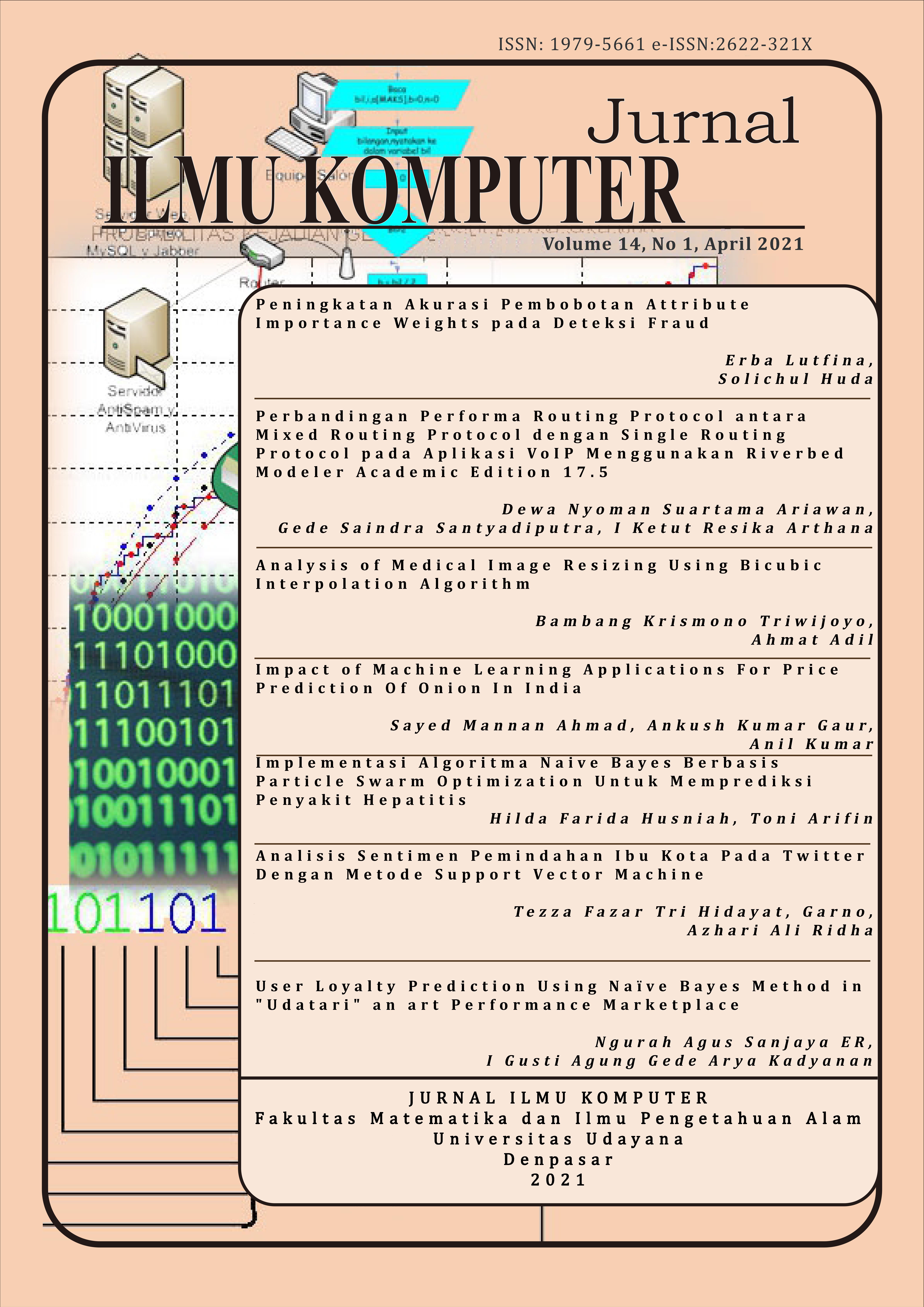Analysis of Medical Image Resizing Using Bicubic Interpolation Algorithm
Abstract
Image interpolation is the most basic requirement for many image processing tasks such as medical image processing. Image interpolation is a technique used in resizing an image. To change the image size, each pixel in the new image must be remapped to a location in the old image to calculate the new pixel value. There are many algorithms available for determining the new pixel value, most of which involve some form of interpolation between the closest pixels in the old image. In this paper, we use the Bicubic interpolation algorithm to change the size of medical images from the Messidor dataset and then analyze it by measuring it using three parameters Mean Square Error (MSE), Root Mean Squared Error (RMSE), and Peak Signal-to-Noise Ratio (PSNR), and compare the results with Bilinear and Nearest-neighbor algorithms. The results showed that the Bicubic algorithm is better than Bilinear and Nearest-neighbor and the larger the image dimensions are resized, the higher the degree of similarity to the original image, but the level of computation complexity also increases.





 Submissions
Submissions






